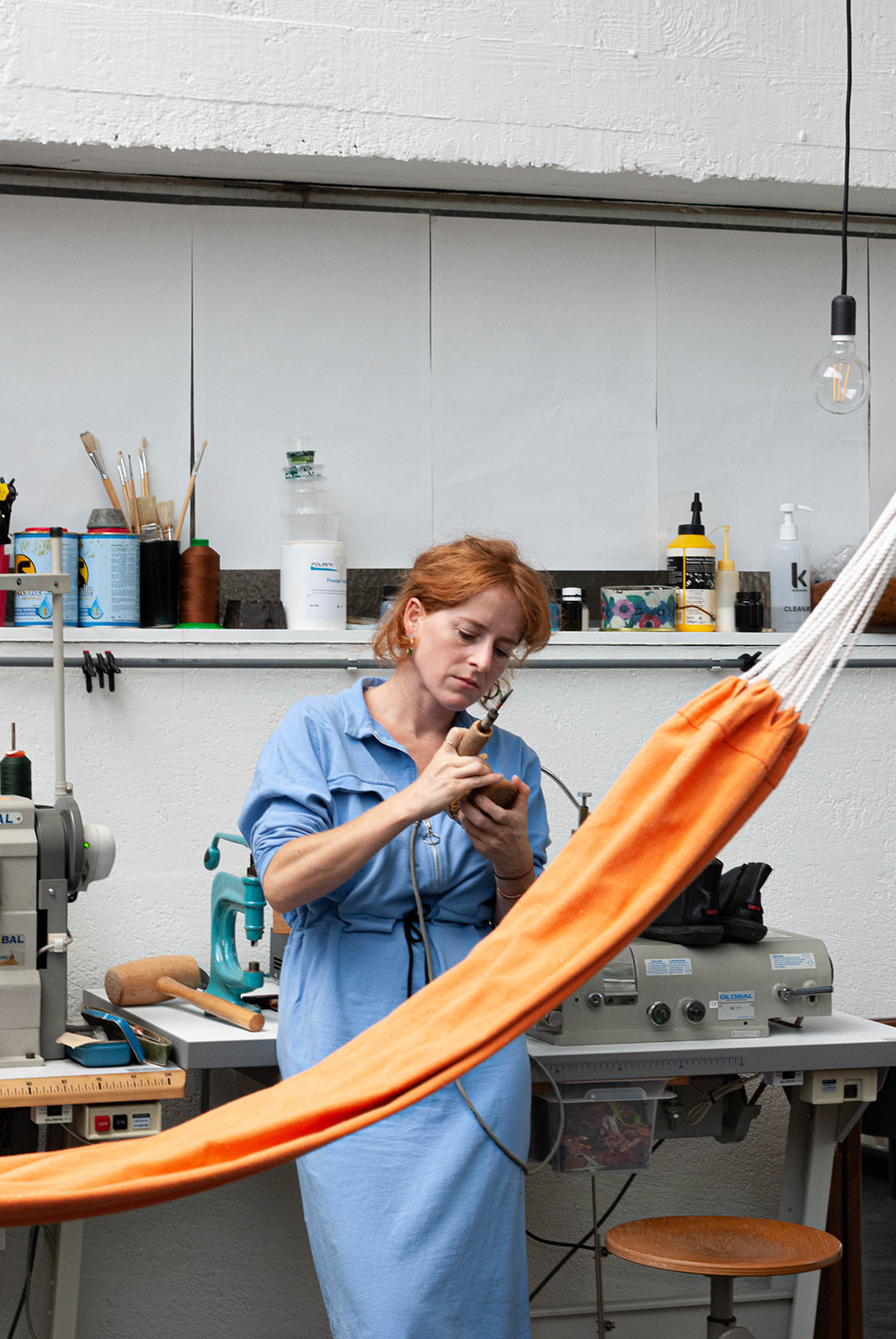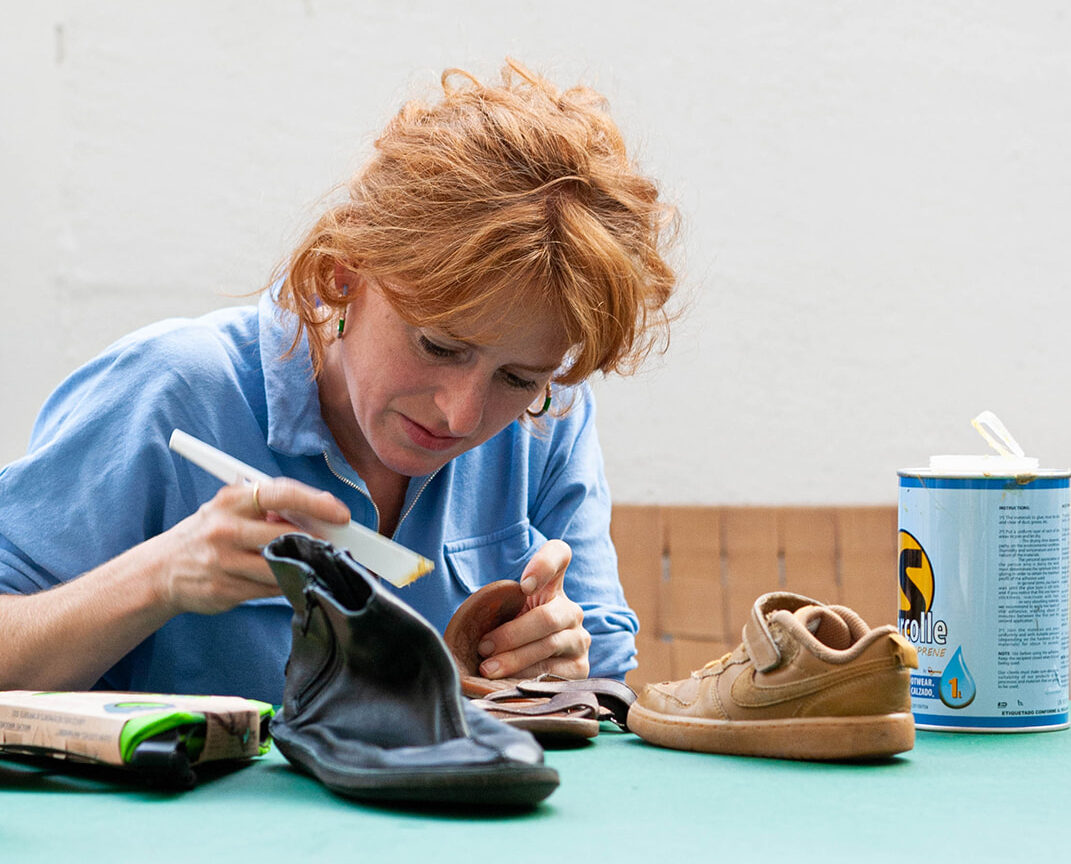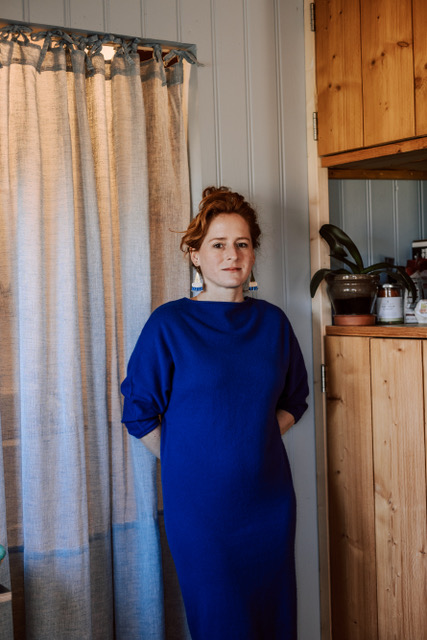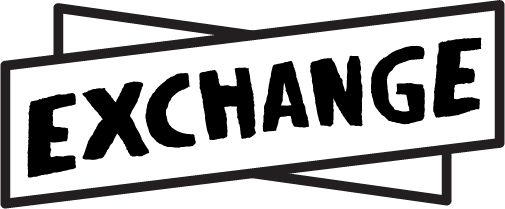Meet Liesbeth Verhelst, growth programme coach and fashion expert
The term fashion designer does not suffice to describe Liesbeth Verhelst. With her own design and repair studio, a handbag brand and a whole host of other leather accessories, she can easily fill her days. Add to that her workshops and the volunteer work she does for Exchange vzw, and you'll understand why she was declared a busy bee and 'Woman to watch' by Marie Claire. We sat down with Liesbeth to talk about her journey and her work for Exchange.
How did you get into the fashion world?
Liesbeth Verhelst: The first trigger came for me at an early age. I am part of identical twins and until I was 12 years old we were put in the same clothes. As a somewhat logical act of rebellion and part of my search for identity, I started making my own clothes. From the age of 16 I began attending night school and soon I was getting requests from people around me to do it for them.
I did not grow up in an entrepreneurial family and was pretty much the only 'creative'. Consequently, I was not allowed to study fashion. I ended up studying orthopedagogy, but the fashion-related ideas and requests kept pouring in. When I was 18, I came more and more into contact with handbags. I bought my first one at H&M, but it soon started to 'peel off'. I found that downright horrifying. It formed the basis for what is now pretty much my professional identity: I am a 'frustration designer'. My biggest motivation is 'it can be better'. Better materials, better workmanship. I started making my own handbags and during a student job in a fashion store, the owner asked me if I didn't want to hang my handbag in the window. Within a week we sold three of them. I started focusing more on handbags soon after.

You're clearly keeping yourself busy. How do you combine it all?
However you put it, you have to make choices. I was once a yoga teacher, but realized that I am only one person and that big passions are hard to combine if you want to achieve some kind of mastery somewhere. Now I focus purely on fashion.
Everyone in my family works at the Ministry of Finance. They thought it was "scary" that I wanted to make a living with fashion. I grew up with that fear and therefore have been very careful in my venture. My main profession brought stability, my side profession was my big playground. Now my playground is starting to get very serious: I am completely self-employed, which still feels uncanny. My goal is to be allowed to search and 'play' until I'm 40, and from that age I want to be a center of expertise in fashion. I have two more years. Right now, what gives me hope and makes me feel secure is that I see definite growth in my business.

And have you achieved that mastery yet?
I teach hand sewing, in a studio that I got into thanks to an assignment in Kenya. Last week I was taking lessons from a fellow teacher and it turns out he has a huge knowledge in that. I specialize in machine sewing and leather processing with machines, and now there is someone who has mastered hand sewing through and through. It is the first time in years that I have met someone who can teach me an incredible amount. Am I a master? In some sense yes, but even for a master, learning remains endless endeavour. Every craft is a matter of step by step. So I am mostly a good step-by-step taker.
Sustainability is really central to your work. Do you notice that with other designers as well?
I have always been aware of the finite nature of the earth, so sustainability is an essential part of my life. Unfortunately, there is a huge amount of greenwashing. It's forced by the market, but in the end many designers and companies are just going to want to sell new products in the first place. Traveling a lot to Africa and Southeast Asia, for example, confronted me with the power of sustainability. People there own much less stuff and what they have, they repair to infinity. In the craziest, but often super creative ways. The plastic garden chairs that we find horrendous are repaired with needle and thread. In Kenya they make baskets with packing ribbons from boxes.
I myself have always been a magpie when it comes to plastic, for example. It's so beautiful, with all those colors and textures, why do we throw it away? The mountain of waste is growing, resources are being depleted...when you map out the origin of every part of a product, you are faced with hallucinatory results. Unfortunately, most consumers don't want to invest in repairs. It is simply more expensive than the current disposable culture. France does have a nice solution for that: each person gets an annual budget to have things repaired. That should be introduced here as well. Ideally, there would be permanent public companies where you could have things repaired.
Of course, you've also gained some overseas experience on behalf of Exchange. How did you end up with us?
Quite by accident. Every time I travel, I have my feet taken care of. My beautician had a friend whom Exchange had asked to share expertise on leather working in Senegal. She wasn't really interested and asked if I could do it. I was of course super excited, contacted Exchange, and we were off. I then did two 11-day missions and to me, it was everything I hoped for. Until then, I was a bad traveler: I went to a country and automatically ended up in the tourist circuit. That way of traveling leaves you with few authentic contacts. By sharing your passion and working daily with people from there, you get to know so much more.
What really appeals to me about missions like this is the flexibility. If you need something, half the time it's not there. But that's okay. We'll fix that. That's a wonderful slowness that suits me as a person. I want to bring that slowness from Belgium, not the day-to-day rush that is so typical of Western countries.

You also spent a lot of time in Rwanda for Rwanda Clothing. How did you experience that growth program?
I was asked to go and share my expertise there and asked one of my best friends from fashion technology to come along. I conducted three training sessions there in leatherworking; now I fill the role of program coach at Rwanda Clothing and go annually. This is also how I saw Exchange's model evolve from single missions to long-term growth programmes. Loose missions are fine, but I see tremendous added value in a programme. A programme is more focused. A clear trajectory with a beginning and end, a baseline and objective. That is much more meaningful for growth companies and feels less like 'loose sand'.
Are there any such missions planned in the future?
I am happy to announce that I will be going to Malawi in February for Kibébé, a production workplace in a large refugee camp that makes handicrafts and sells them worldwide. I met the entrepreneur behind the project in Liege and will go to Malawi to take a look at their current range of products and then see how I, as a designer, can ensure that the range becomes more interesting to different consumers. We have now decided to create menstrual underwear for women from the camp. With the right products, Kibébé can have more financial security, allowing them to continue their work with refugees. That in turn is linked to dignity, being able to work, ...
I'm going to interact with a very different layer of the population there. In Rwanda, I helped create products that are expensive for the Rwandan middle class, and the entrepreneur I work with even dresses the president and his family. Then in India, I worked with the lowest caste. These completely different lifestyles and consumers make me discover all layers of the fashion world, and my experience in Malawi is undoubtedly going to contribute to that.

